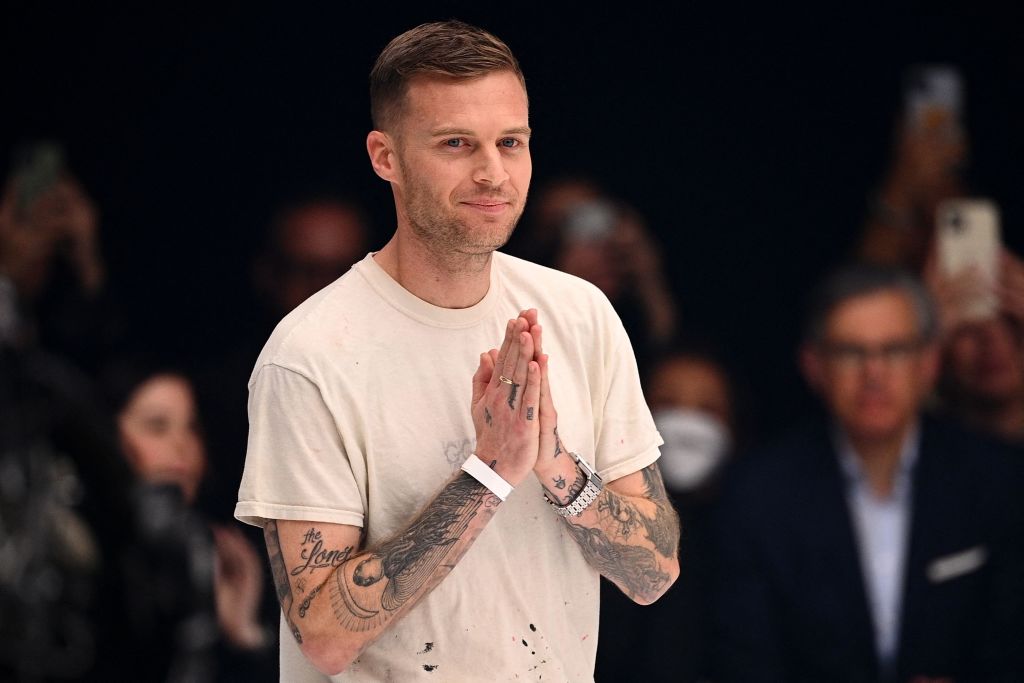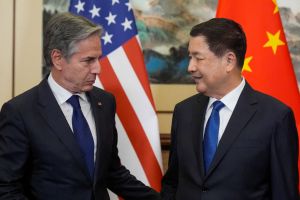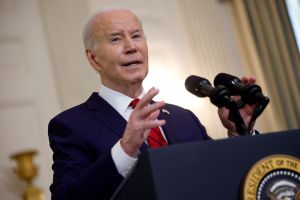Matthew Williams, the tattooed American fashion designer and creative director at Givenchy, will soon be evicted from the famous house. Givenchy announced on December 1 that Williams would leave his job at the end of the year. Nobody is particularly surprised. His three-year tenure has been controversial and highly disliked by many, and also hasn’t produced any viral products. It was obvious Williams’s publicists knew his time was up too. Late last year, he was profiled by Jessica Testa in the New York Times; an article built around the fact that designer contracts typically only last three years, and that his time at Givenchy wasn’t producing hits. Diesel, Vetements, Loewe and Balenciaga have all spun controversy into sales. The best Givenchy achieved was disappointment, if that.
Last year’s Givenchy x Disney collaborative line — of overpriced T-shirts, clad with Givenchy logos and Disney icons — was perhaps the lowest point creatively for the brand that dressed Hepburn; particularly as, despite the attempt to make this collection a hit, nobody even cared enough to be annoyed by it. It has been totally forgotten.
Many pin such moves on Williams — and the fashion internet cheered on the announcement he’d be leaving the brand. But Williams shouldn’t be wholly blamed for Givenchy’s recent disappointments. On the contrary, his failure in the role lies at the hands of owner-company, LVMH, and the way they’ve shifted high-fashion towards haste, virality and capturing the moment. There’s a lot to suggest that Williams actually would have been the perfect creative director for the brand had he been given more guidance and time.
Though he’s not a well-known name outside of fashion, Williams has an esteemed background, having worked for (his ex-girlfriend) Lady Gaga, been a creative partner of Kanye West, and founded 1017 Alyx 9SM in 2015; an interesting, grungy, high-end brand, famous for its rollercoaster belt hardware and industrial tailoring.
Through his short ascent, Williams earned a reputation for great, detailed tailoring, viral hardware and popular shoes. That continued with Givenchy. Though he never made a hit handbag, his signature interlacing “G”s is now the brand’s mark, and rather than just reuse his famous roller-coaster belt hardware (which he lent to fellow designer Kim Jones at Dior), he came up with a perfect new detail, the Givenchy padlock, which is probably my favorite fashion detail in recent years.
The concept of a silver Givenchy padlock has a comic clash of mundane and luxurious, but they’re genuinely beautiful to look at, and were inspired by the love padlocks that tourists leave on Parisian bridges. Whether on earrings, belt buckles, blazer buttons, boot zip tops, or handbag locks, his padlock is the perfect signature for Givenchy; but for signing what message?
At the launch of his debut collection (released, without an audience, during Covid), Williams said, “I’m not a person who designs in themes. It’s very much product-focused.” That sounds great, particularly for selling viral high-margin accessories; and it’s worth highlighting the prescient chunky-soled loafers from his first collection, underrated TK360 knit sneakers, shrouded Shark Lock high boots, and all of his Givenchy Lock jewelry. But there has been no theme or idea to carry his accessories. Every collection has been scattershot, and during his short tenure, Williams never communicated what he thought Givenchy should mean. A clear identity is what Givenchy needed most, as a brand cannot just depend on the image of Audrey Hepburn in a little black dress.
Givenchy has no equivalent to Dior’s bar jacket or saddle bag and its associations with intricate, delicate luxury; nor Balmain’s gold hardware and its line between flashy bombast and elegant chic; or Ralph Lauren’s sweaters and his classic rustic American handsomeness; or Louis Vuitton’s Bandoulière bags and image of opulent leisure. None of his predecessors established what Givenchy, as a brand, is and means, and he wasn’t given time to change that.
Working under a three-year timer, Williams focused on his strengths and short-term goals, bringing in celebrity collaborators, increasing social media buzz, and leaning into trendy streetwear. He had precedent for this style, first introduced by Riccardo Tisci. But when Tisci brought luxury streetwear to the brand and appealed to the rapper clientele, it was unique to luxury fashion. Williams’s call-back, releasing pre-distressed, grungy Givenchy jackets and trousers, just felt like a worse version of what every other house was doing. Why get the watered-down version from Givenchy when you could get the uncut stuff from Balenciaga?
The great shame is that his less flashy items — the suits, dresses, and daily womenswear — hinted at a better, more persuasive vision for Givenchy as a kind of relaxed, nonplussed glamour (“oh, I woke up like this”). Walking through Selfridges the other day, packed in the busy pre-Christmas shopping season I stopped by the Givenchy menswear section, and was once again blown away by the suiting. Looking down their black blazer, the cut was immaculate, and the addition of a rectangular silver clip at the button made it feel modern, and effortlessly chic.
It felt like what Givenchy menswear should be; not logo’d caps, monogrammed ripped sweaters and dirtied denim. It felt like the sort of man who wears that jacket would throw it on with a pair of oversized sunglasses, waking up from a late night out, on his way to get morning coffee, and look perfect doing so. Givenchy is croissant flakes on a boucle shawl, not oversized bulky logos.
But influencers understand tacky handbags that go viral on TikTok; they don’t care about chic.
As I looked at this beautiful jacket, a man passed me with “BALENCIAGA” repeatedly printed on a pre-ripped sweater and on the front of his tatty cap.
The problem wasn’t Williams. The problem is modern fashion. Despite it being the busiest time of the year, I was alone browsing Givenchy’s menswear.


















